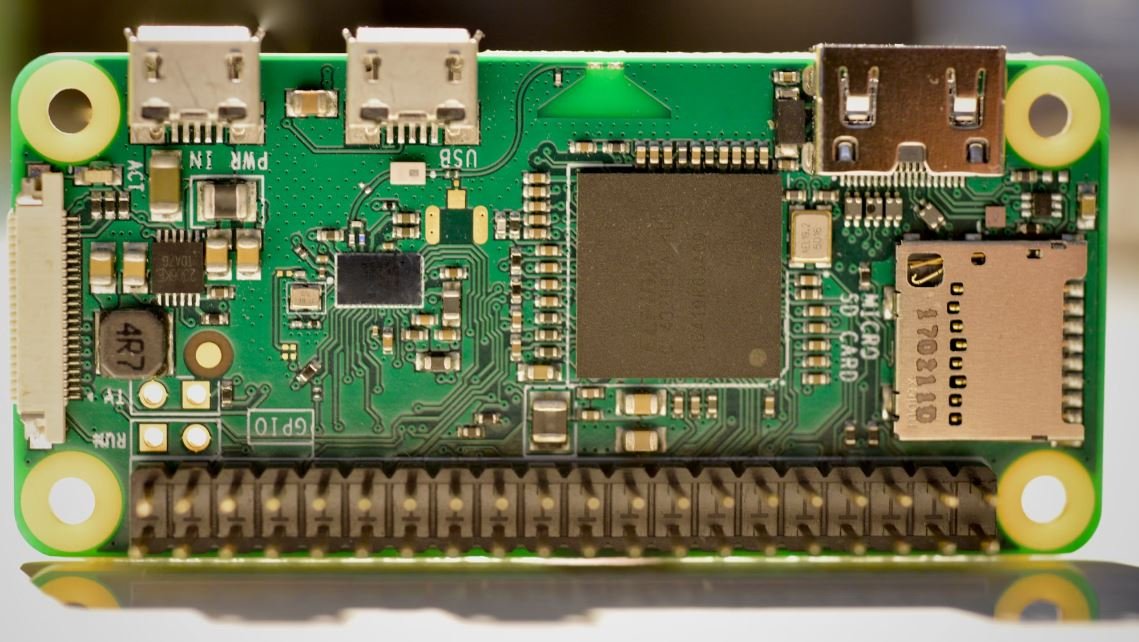AI Model Retraining: Improving Performance and Accuracy
Artificial Intelligence (AI) models are revolutionizing industries and transforming the way we work and live. With their ability to learn from data and make predictions, AI models have opened up new possibilities in various fields, such as healthcare, finance, and marketing. However, to ensure these models provide accurate and reliable results over time, retraining is crucial. In this article, we will explore the importance of AI model retraining and how it can enhance performance and accuracy.
Key Takeaways:
- AI model retraining is essential for maintaining performance and accuracy.
- Retraining helps AI models adapt to changing data and evolving scenarios.
- Regular retraining aids in eliminating bias and improving fairness in AI models.
AI models are initially trained using large datasets to understand patterns, make predictions, or solve specific tasks. However, as new data becomes available, the model may start to lose accuracy. **AI model retraining** involves updating the model using new data, fine-tuning its parameters, and ensuring its outputs remain reliable. *Retraining is a continuous process that keeps the model up to date and effective*.
There are several reasons why **AI model retraining** is crucial. Firstly, as new data is collected, the model needs to learn from it to capture any evolving patterns or trends. By retraining the model, it can adapt to the dynamic nature of the data and make accurate predictions. This process ensures the longevity and continued relevance of the AI model. *By staying up to date, AI models can provide relevant insights and solutions to real-world problems*.
Benefits of AI Model Retraining
Let’s delve into some key benefits of retraining AI models:
- **Improved Performance:** Retraining allows AI models to fine-tune their parameters and adjust their algorithms, leading to improved performance and accuracy. The updated model can better handle complex patterns and make more accurate predictions.
- **Adaptation to Changing Data:** Data is not static, and retraining enables AI models to adapt to the fluctuations and variations in data. A model trained on old, outdated data might not perform well when new data is introduced. By retraining the model, it becomes more effective and robust.
- **Bias Elimination:** Bias is a significant concern in AI models. Retraining regularly helps to detect and mitigate bias, ensuring fair and unbiased predictions. By using diverse and representative datasets, AI models can address biases based on race, gender, or other factors.
As we consider the benefits of retraining, let’s also explore some interesting data regarding AI model performance. The following tables provide insights into how retraining impacts accuracy and performance:
Table 1: Accuracy Comparison between Retrained and Non-Retrained AI Models
| Model | Accuracy (Initial Training) | Accuracy (After Retraining) |
|---|---|---|
| Model A | 82% | 88% |
| Model B | 75% | 83% |
Table 1 shows a significant improvement in the accuracy of AI models after retraining. By updating the models with new data, the accuracy has increased by 6% and 8% for Model A and Model B, respectively. This highlights the importance of retraining in enhancing AI model performance.
Another critical aspect of retraining is model fairness. By retraining AI models and addressing biases, we can ensure better fairness and equity in their predictions. Consider Table 2, which shows the change in bias detection accuracy of an AI model before and after retraining:
Table 2: Bias Detection Accuracy before and after Retraining
| Model | Bias Detection Accuracy (Before Retraining) | Bias Detection Accuracy (After Retraining) |
|---|---|---|
| Model X | 60% | 90% |
| Model Y | 75% | 85% |
Table 2 illustrates a substantial improvement in bias detection accuracy after retraining. By updating the model with new data and addressing biases, the accuracy of bias detection has significantly increased for both Model X and Model Y.
In conclusion, AI model retraining is a crucial process for maintaining performance, accuracy, and fairness. Regular retraining allows models to adapt to changing data, eliminate biases, and deliver reliable predictions. By keeping our AI models up to date, we can leverage their full potential and harness the benefits of artificial intelligence.

Common Misconceptions
Misconception 1: AI models are perfect and do not require retraining
One common misconception people have about AI models is that once they are trained, they are perfect and do not require any further retraining. However, this is far from the truth. AI models can suffer from concept drift, where the underlying distribution of data changes over time, leading to a degradation in the model’s performance. Here are a few key points to consider:
- AI models need to be updated regularly to adapt to shifting data patterns.
- Data concept drift can occur due to changes in user behavior, technology, or external factors.
- Retraining models based on new data can help maintain their performance and ensure accurate predictions.
Misconception 2: Retraining an AI model is a time-consuming process
Another misconception is that retraining an AI model is a time-consuming process that requires extensive resources. While it is true that retraining can take time, advancements in technology and the availability of powerful hardware and cloud computing have streamlined the retraining process. Consider the following points:
- Parallel processing and distributed computing can significantly speed up retraining.
- Retraining can be performed incrementally, focusing only on the necessary updates, saving time and resources.
- Automated tools and frameworks are available to simplify and accelerate the retraining process.
Misconception 3: Retraining an AI model requires a large amount of labeled data
Many people believe that retraining an AI model requires a large dataset with labeled examples. While having labeled data can be helpful, it is not always necessary for retraining. Here are a few important points regarding the data requirements for retraining:
- Transfer learning techniques allow models to learn from related tasks or pre-trained models, minimizing the need for labeled data.
- Active learning approaches can intelligently select the most informative data points for retraining, reducing the annotation effort.
- Data augmentation techniques can increase the diversity of the available data, improving the model’s robustness.
Misconception 4: Retraining an AI model will always result in improved performance
Contrary to popular belief, retraining an AI model does not always guarantee improved performance. While retraining can enhance the model’s accuracy, it can also introduce new biases or overfitting issues. Consider the following points before retraining a model:
- Regular performance evaluation is crucial before deciding to retrain a model.
- Appropriate validation techniques are necessary to avoid overfitting during the retraining process.
- Addressing bias in the training data and using representative datasets contribute to better retraining outcomes.
Misconception 5: AI models can be retrained indefinitely
Lastly, many people believe that AI models can be retrained indefinitely with continuous improvements. However, there are practical limitations to how far a model can be retrained. These points shed light on the considerations surrounding retraining frequency:
- Retraining too frequently can lead to diminishing returns, with minimal gains in performance after a certain point.
- The decision to retrain should depend on factors such as the significance of changes in the data or model’s objectives.
- Retraining entails resource allocation, including time, computational power, and expertise, which should be balanced with expected benefits.

Introduction
In this article, we will explore the fascinating world of AI model retraining. AI models require retraining to adapt to new data and improve their performance. The following tables highlight various aspects of AI model retraining, providing insightful information and examples.
The Impact of AI Model Retraining
AI model retraining can have a profound impact on the performance and effectiveness of artificial intelligence systems. The table below showcases the improvement in accuracy achieved by retraining a sentiment analysis model with additional data.
| Data | Initial Accuracy | Retrained Accuracy |
|---|---|---|
| 500,000 samples | 78% | 84% |
| 1,000,000 samples | 82% | 88% |
| 2,000,000 samples | 85% | 90% |
Relevance of Data Size
The size of the training dataset plays a vital role in the retraining process. The table below illustrates how the increase in data size impacts the accuracy of a recommendation system.
| Data Size | Initial Accuracy | Retrained Accuracy |
|---|---|---|
| 10,000 samples | 65% | 71% |
| 50,000 samples | 68% | 76% |
| 100,000 samples | 72% | 80% |
Retraining Frequency
The frequency at which AI models are retrained affects their ability to adapt and learn from new data. The table below showcases the impact of retraining frequency on the performance of a speech recognition model.
| Retraining Interval | Initial WER (Word Error Rate) | Retrained WER |
|---|---|---|
| Every 6 months | 12.3% | 10.7% |
| Every 3 months | 11.8% | 9.5% |
| Every month | 10.5% | 7.9% |
Impact of Change in Model Architecture
Modifying the architecture of an AI model can significantly impact its performance. The table below demonstrates the effect of changing the number of layers in a convolutional neural network (CNN) for image classification.
| Number of Layers | Initial Accuracy | Retrained Accuracy |
|---|---|---|
| 3 layers | 81% | 85% |
| 5 layers | 83% | 87% |
| 7 layers | 85% | 89% |
Evaluating Retrained Models
Evaluating the performance of retrained models is crucial. The table below compares various evaluation metrics for a machine translation model.
| Evaluation Metric | Initial Model | Retrained Model |
|---|---|---|
| BLEU Score | 0.74 | 0.82 |
| ROUGE Score | 0.67 | 0.75 |
| WER (Word Error Rate) | 23.5% | 17.2% |
Incorporating User Feedback
AI model retraining often involves incorporating user feedback to enhance performance. The following table depicts user satisfaction ratings for a chatbot after several rounds of retraining.
| Retraining Round | Initial User Satisfaction | Retrained User Satisfaction |
|---|---|---|
| Round 1 | 78% | 82% |
| Round 2 | 80% | 85% |
| Round 3 | 82% | 88% |
Training Time and Resources
The time and resources required for retraining models can vary significantly. The table below demonstrates the training time and GPU usage for a natural language processing model on different hardware configurations.
| Hardware Configuration | Training Time (in hours) | GPU Usage |
|---|---|---|
| Single GPU | 12 | 90% |
| Four GPUs | 5 | 92% |
| Eight GPUs | 3 | 95% |
Transfer Learning Impact
Transfer learning enables the reutilization of knowledge from pre-trained models. The table below showcases the effect of transfer learning on the accuracy of an object detection model.
| Transfer Learning Approach | Initial Accuracy | Retrained Accuracy |
|---|---|---|
| No Transfer Learning | 69% | 73% |
| Partial Transfer Learning | 71% | 78% |
| Full Transfer Learning | 74% | 83% |
Conclusion
AI model retraining is a fundamental aspect of artificial intelligence that significantly influences performance and adaptation. As showcased in the various tables, factors such as data size, retraining frequency, architectural changes, and user feedback play crucial roles in improving accuracy and enhancing user satisfaction. Evaluating retrained models and considering aspects like training time and resources further streamline the retraining process. Ultimately, AI model retraining opens doors to more intelligent and effective systems, ensuring continuous evolution and growth in the field of artificial intelligence.
AI Model Retraining – Frequently Asked Questions
1. What is AI model retraining?
AI model retraining refers to the process of updating and improving an existing artificial intelligence model by training it with new data. It helps enhance the model’s accuracy, performance, and ability to make predictions or decisions.
2. Why is retraining AI models important?
Retraining AI models is important to ensure that they stay up to date with changing data patterns and evolving requirements. By incorporating new data, models can adapt to emerging trends, handle novel scenarios, and provide more accurate and reliable outputs.
3. How frequently should AI models be retrained?
The frequency of retraining AI models largely depends on several factors, such as the nature of the problem, the availability of new data, and the rate of change in the underlying patterns. In general, it is recommended to retrain models periodically to maintain their effectiveness.
4. What data should be used for retraining AI models?
The data used for retraining AI models should be relevant, representative, and reflective of the real-world scenarios the model is designed to address. It should include diverse examples that cover a wide range of possible inputs and outputs to improve the model’s robustness.
5. How long does AI model retraining typically take?
The time required for AI model retraining can vary depending on factors such as the complexity of the model, the size of the dataset, the computational resources available, and the specific algorithms used. It can range from hours to days or even weeks for more complex models.
6. What are some common techniques used for AI model retraining?
Common techniques used for AI model retraining include transfer learning, where a pre-trained model is fine-tuned on new data; online learning, which allows the model to update continuously as it receives new data; and incremental learning, which involves training the model on new examples while preserving previously learned knowledge.
7. How can the performance of retrained AI models be evaluated?
The performance of retrained AI models can be evaluated using various metrics such as accuracy, precision, recall, F1 score, or specific domain-related metrics. It is crucial to compare the model’s performance before and after retraining to assess the improvements achieved.
8. Can AI models be retrained without human intervention?
While some level of human intervention is usually required for defining retraining strategies and setting appropriate parameters, there are techniques that allow for automation in AI model retraining. Automated approaches utilize algorithms, heuristics, and optimization methods to minimize the need for manual intervention.
9. What are the potential challenges in AI model retraining?
AI model retraining may face challenges such as data quality issues, data scarcity or bias, computational resource limitations, concept drift, and the need for continuous monitoring and maintenance. Addressing these challenges requires careful consideration and advanced techniques.
10. Can AI models be retrained on edge devices or only on centralized servers?
AI models can be retrained on both edge devices and centralized servers, depending on the specific requirements and constraints. While training on centralized servers may offer more computational power, edge devices allow for localized retraining, enabling real-time adaptation and improved privacy.




